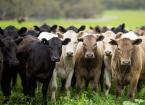Energy Efficiency – Horticulture
Horticulturists typically grow crops in a greenhouse or polytunnel, where the following factors can be regulated:
- Temperature
- Humidity
- Light
- Carbon dioxide
When controlled to an optimal level, these conditions maximise the plant yield per unit of energy consumed...










